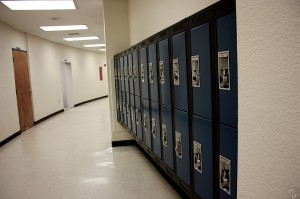
Anyone with ADD will tell you that staying organized is quite a challenge. In addition to having difficulties focusing in class, staying still in church on the church furniture and listening to directions, kids with ADD have trouble organizing their time and their space.
One area where this is certainly true is with the school locker. Here are some tips that can help you to help your child organize his school locker.
- Help him to get rid of anything that he doesn’t need in the locker.
- Help him to group together his books so that his books for morning classes are together and his books for the afternoon are together. Or, he might want to group together all textbooks, then put all notebooks together, etc.
- Attach a message board and your child’s class schedule to the side of the locker on the inside.
- If there is space for two hooks, try to install these. They are perfect for the winter coat and the gym bag.
- Add extra shelves if you can so that your child can put smaller items on the top shelf like keys, pencils, safety pins, staplers, etc.
Once the locker is set up and ready to go, speak to your child about a maintenance schedule. See if he can look through his locker once a week to get rid of trash and to keep up the maintenance that he started.

Students crave structure, as do most of us. The atmosphere of learning can be greatly enhanced with just a few simple steps to get kids (and teachers) on track, and keep them there. Here are some simple ideas to incorporate into the class’s day which teachers will find helpful.
- Begin the lesson with a warm-up question which is already written on the board when students first enter and sit down at their classroom desks. The students will immediately be directed towards thinking about the day’s subject, or will have their memories refreshed with a question about the subject of the last lesson. Don’t make the question or assignment too difficult or long; remember it is just a warm-up. This exercise helps students to focus so they won’t be spending the first few minutes of class wandering around either physically or mentally.
- Have a clearly marked-well organized place for students to hand in their work. One idea is to have a set of stackable plastic trays set up near the door. Each tray is for a different class period, stacked in order. Graded work can be kept in a different place, such as a hanging file, until ready to be handed out to the students.
- Try to refrain from taking attendance by calling out the names of your students. This inevitable leads to joking around and distracts the students from the task of learning. After the first few days the teacher should know the names of the students, and be able to match the bodies to a seating chart, just ticking off those who are missing.
There are many other tips which can help improve the atmosphere of learning, including experimenting with lighting, placement of classroom furniture, and class decorations. Research has shown that a lively and varied environment surrounding students can help the creative process.


